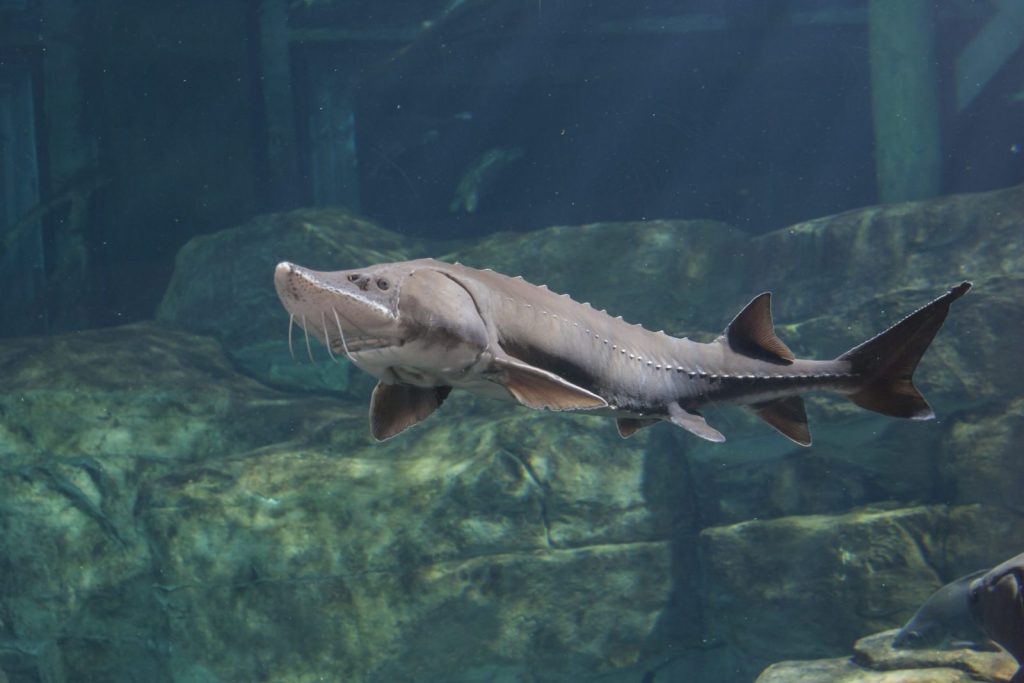Context:
According to the WWF, the population of the four most endangered Sturgeon fish is continuously decreasing.
More on the news
- Four species of sturgeon are among the most endangered fish species in one of their last strongholds of the lower section of the Danube River in southeastern Europe.
- The World-Wide Fund for Nature (WWF) documented 395 cases of illegal sturgeon fishing and trade in Bulgaria, Romania, and Ukraine between 2016 and 2023.
Sturgeon Fish
- Sturgeons are a group of ancient fish originating from the late Triassic period more than 200 million years ago.
- They usually live in freshwater, coastal waters and inner seas.
- They Mostly feed on benthic organisms found on the bottom of water bodies, like molluscs, invertebrates and small fishes.
- They are flagship species in their rivers and adjacent seas.
- Six Sturgeon Species formerly native to the Danube River are

- European sturgeon (Acipenser sturio): locally extinct
- Ship sturgeon (Acipense nudiventris): locally extinct
- Stellate sturgeon (Acipenser stellatus): Critically Endangered
- Russian sturgeon (Acipense gueldenstaedtii): Critically Endangered
- Beluga (Huso huso): Critically Endangered
- Sterlet (Acipense ruthenus): Endangered since 2022
- The Lower Danube Basin is the region in southeastern Europe where the Danube River flows into the Black Sea.
- The European sturgeon (Acipenser sturio) and the ship sturgeon (A. nudiventris) are native to the Danube River.
- Still, the WWF noted that the Lower Danube Basin is among the last European regions with self-reproducing sturgeon populations. Thus, the Lower Danube should be a priority for conservation.
- Sturgeons are heavily exploited globally for their roe/eggs (caviar) and meat.
Danube River
- It is the second longest in Europe after the Volga.
- It rises in the Black Forest mountains of western Germany and flows for some 1,770 miles (2,850 km) to its mouth on the Black Sea.

